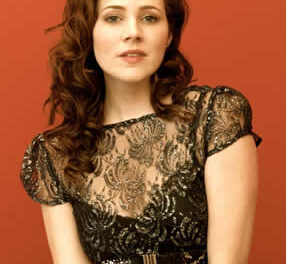A smaller audience than usual in Dana Auditorium heard a superbly executed performance by the Thursday’s Young Artists Orchestra of the Eastern Music Festival, one of two full all-student orchestras fielded by the festival. Their fascinating program paired a deeply engaging Viola Concerto by Paul Chihara with the hoary old warhorse, Tchaikovsky’s Fifth Symphony. The orchestra of young artists proved to have considerable stamina left for a brilliant run to the finish.
A “Meet the Composer” program in the Moon Room with Paul Chihara reportedly provided one of the most memorable talks in the festival’s history. I missed about a quarter of his enthralling mix of rich biographical detail and his insights to his Concerto for Viola and Orchestra: When Soft Voices Die (2008, revised 2010). When he was about 6 years old, his family was among many Japanese held in a WWII era internment camp in Idaho. He found he had a good ear for music and began his music education with nuns who were among many missionaries who volunteered to help detainees. His degree is from Cornell University where he studied with Robert Palmer. Along the way, he studied with Nadia Boulanger, and his classmates included Astor Piazzolla and Quincy Jones. Chihara’s compositional output has an unusually broad range from colorful chamber and orchestral music to scores for dance, theater, film, and TV, such as China Beach.
Chihara’s Viola Concerto was commissioned for performance by Robert Vernon of the Cleveland Orchestra in 1991, but a serious and nearly fatal illness delayed its completion and premiere for eighteen years. During his preconcert talk, the composer explained a number of musical quotations or forms he used in the piece. He played the sensuous opening of Debussy’s “Prélude à l’après midi d’un faune” on an upright piano. He related a story Boulanger told that Ravel had said this Debussy piece was music he wanted to hear as he died. Chihara said he associated the Debussy piece more with death than sexuality. He played a DVD of the opening of the TV series China Beach in which a love song to the composer’s wife had been incorporated, and which, along with the Debussy, is used in the Viola Concerto. He gave a line from Alban Berg’s opera Wozzeck which is also quoted. He played an excerpt of a troubled or twisted waltz of his own which plays a significant role in the latter part of the concerto. Among other important elements is a bell chime at the beginning and end, as well as harmonics which appear first in the harp. The concerto runs about 22 minutes and is a kaleidoscope of instrumental colors, a wide palette of dynamics, and a vast tapestry that captures the listener’s imagination. It is far more than a collage of musical quotations.
The original player for whom Chihara composed his Viola Concerto, Robert Vernon, was the EMF’s soloist, and one could hardly imagine a more authoritative interpretation. He produced a full, rich tone which projected well, and Chihara’s scoring kept from covering the subtle sound of the viola. The student musicians gave it their all with consistently excellent ensemble in each orchestra section, with instant response to every shift in rhythm or dynamics. Resident conductor Grant Cooper directed an economical accompaniment that fitted Vernon’s viola like a glove.
Sometimes, after a routine performance of an orchestra warhorse, you can begin to wonder why it is so popular. That was absolutely not the case after Grant Cooper led his student musicians through a white-hot performance that took no prisoners and sounded like it was that of a newly minted work. Today’s festival students are remarkably skilled on their individual instruments, and their conductors hone their ensemble playing. Best of all, they are in most instances playing these works together for the first time. There’s the burning intensity and passion of first discovery as opposed to perhaps years of routine under a time beater. The dark sound of the pair of clarinets played by Joey Velez and Joe Beverly, supported by hushed low strings, opened beautifully the Tchaikovsky Symphony No. 5 in E minor, Op. 64. The perfectly matched violin sections made a fine contrast as they entered in turn. There was plenty of fire and swagger in the first movement. Rich low strings set the mood perfectly for the wonderful horn solo played by Amanda Gomez singing the principal melody of the second movement. The underlining melancholy of the waltz portion was very well executed. Rousing brass and stirring percussion were just a few highlights of the tightly scored finale. The forward momentum of Cooper’s interpretation swept the listener along. There were very few minor flubs, a little water in horns once, over the course of a very satisfying performance. Bravo!












